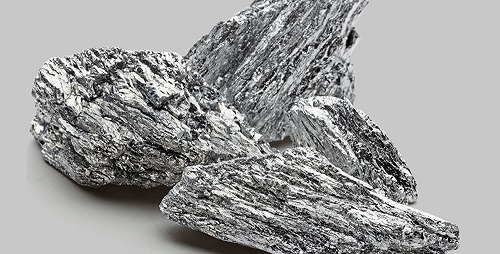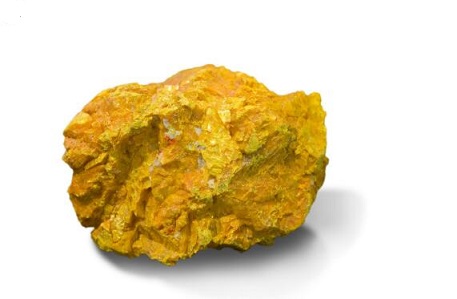Antimony——Exposure Sources & Industrial Hygiene
Mar 5,2020
First aid: Eye: irrigate immediately; skin: water flush promptly; breathing: respiratory support; swallow: medical attention immediately
Target organ(s): Eyes, skin, respiratory system, cardiovascular system
Occupational exposure limits: NIOSH REL: 0.5 mg Sb/m3
TWA, OSHA PEL: 0.5 mg Sb/m3 TWA, 1993–1994
ACGIH TLV: 0.5 mg Sb/m3 TWA
Reference values: Oral RfD of 40,000 mg/kg/day (confidence is low), IDLH: 50 mg Sb/m3
Risk phrases: R34-51/53-20/22-36/37/38-36/38
Causes burns. Toxic to aquatic organisms, may cause longterm adverse effects in the aquatic environment. Harmful by inhalation and if swallowed. Irritating to eyes, respiratory system, and skin. Irritating to eyes and skin Safety phrases: S60-61-36/37/39-26
This material and its container must be disposed of as hazardous waste. Avoid release to the environment. Refer to special instructions/safety data sheet. Wear suitable protective clothing, gloves, and eye/face protection. In case of contact with eyes, rinse immediately with plenty of water and seek medical advice.

SOURCES OF EXPOSURE
Exposure to antimonyinhumans can occur throughinhalation, ingestion, and eye or skin contact (Majestic et al., 2012; Felix et al., 2013).
Occupational
Prior to automation and improved working conditions, antimony process workers exhibited an increased risk of lung cancer (Schnorr et al., 1995; McCallum, 2005). Excessive exposures may still occur in electrorefining. Smoking enhanced this association (Cooper and Harrison, 2009). Occupational exposures to antimonymayoccur in battery industries where antimony is alloyed with lead and zinc. In this case, workers are typically exposed to antimony hydride (SbH3) (Cooper and Harrison, 2009). Also known as stibine, SbH3 is produced when antimony reacts with an acid in the presence of a reducing agent such as zinc. Workers in semiconductor industries, where antimony is used as a dopant, can be exposed to stibine. Antimony exposure may also occur when antimony replaces lead in soldering (Fowler et al., 1993).
Environmental

Antimony is also a ubiquitous urban air pollutant, which occurs at an average concentration of 0.001/mg/m3 (Beliles, 1979; Smichowski, 2008). Antimony commonly is released into the air through combustion of fossil fuels and their byproducts and of products containing antimony (Hodzic et al., 2012; Tian et al., 2012; Sun et al., 2014). The resultant form mostlikely is the trioxide, althoughthe tetroxide and pentoxide forms are possible. Rapidly condensed on suspended particulates, the residence time of antimony in the air is thought to range from 30 to 40 days.
INDUSTRIAL HYGIENE
Both proper industrial hygiene and personal hygiene are important. The approaches used to limit exposure to arsenic apply to antimony as well (Table 6.2). The Occupational Safety and Health Administration (OSHA), the National Institute for Occupational Safety and Health (NIOSH, 2013), and theAmerican Conference of Governmental Industrial Hygienists (ACGIH, 2013) have set the permissible exposure limit (PEL), the recommended exposure limit (REL), and threshold limit value (TLV) for antimony compounds (as Sb) at 0.5 mg/m3 for an 8-h workday, 40-hworkweek. The ACGIH has listed antimony trioxide production as a suspected source of human carcinogenicity (A2).
MEDICAL MANAGEMENT
Treatment for antimony poisoning follows the same management as that for arsenic intoxication, primarily chelation with British antilewisite (BAL) for extreme exposure, as well as mercaptans such as dimercaptosuccinic acid or dimercaptopropane sulfonic acid (Aaseth, 1983). Stibine intoxication should be treated as arsine exposure.
REFERENCES
Dunn, J.T. (1928) A curious case of antimony poisoning. Analyst 531:532–533. Felix, P.M., Franco, C., Barreiros, M.A., Batista, B., Bernardes, S., Garcia, S.M., Almeida, A.B., Almeida, S.M., Wolterbeek, H.T., and Pinheiro, T. (2013)
Biomarkers of exposure to metal dust in exhaled breath condensate: methodology optimization. Arch. Environ. Occup. Health 68(2):72–79. Feng, R., Wei, C., Tu, S., Ding, Y., Wang, R., and Guo, J. (2013)
The uptake and detoxification of antimony by plants: a review. Environ. Exp. Bot. 96:28–34. Fowler, B.A.,Yamauchi, H., Conner,E.A.,andAkkerman,M.(1993) Cancer risks for humans from exposure to the semiconductor metals. Scand. J. Work Environ. Health 19(Suppl. 1):101–103.
arcerant, D., Rubiano, L., Blanco, V., Martinez, J., Baker, N.C., and Craft, N. (2012) Possible links between sickle cell crisis and pentavalent antimony. Am. J. Trop. Med. Hyg. 86(6):1057–1061.
- Related articles
- Related Qustion
- Antimony: Major Minerals, Chemistry Properties and Reactions May 29, 2024
Antimony is a silvery, lustrous gray metalloid with five known forms.
- Antimony - Medicinal Use Discovery and History Oct 23, 2020
Red antimony trisulfide occurs naturally in stibnite, a mineral mentioned by Dioscorides and found in Hungary, France, Cornwall and Borneo.
Occurring naturally in the soil, aluminum makes up 8% of theearth’s surface, although higher concentrations may be foundin the soil surrounding.....
Mar 5,2020Inorganic chemistryArsenic (As; CAS #7440-38-2) is a brittle solid with a metallic coloring that ranges from silver to gray. It is a naturally occurring element found in the earth’s crust,....
Mar 5,2020InhibitorsAntimony
7440-36-0You may like






